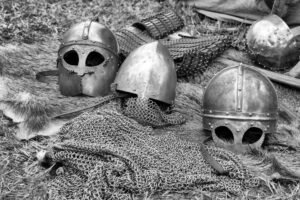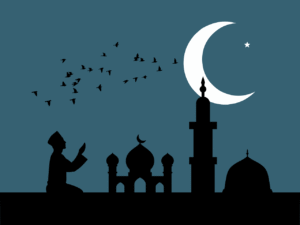Origin
On the 2nd of Safar al-Muzaffar, in the year 122 AH (corresponding to 740 CE), Hazrat Zayd bin Ali Zain al-Abidin bin Imam Hussain bin Imam Ali, raised the banner of truth in the city of Kufa, Iraq, by taking up arms against the injustices of the Umayyad Caliphate. However, he was martyred in this battle by the Umayyads and became immortalized in history as Zayd the Martyr (Zayd al-Shahid). His followers came to be known as Zaydi Shias. Today, the majority of Zaydi Shias reside in Yemen and are associated with the local Houthi tribe.
It is important to clarify a distinction here: The descendants of Zayd the Martyr are also called Zaydi Shias, but some of them are affiliated with the Twelver Shia (Ithna Ashari) branch in terms of beliefs. However, in this article, we are discussing those Zaydi Shias who, in terms of doctrine, recognize Hazrat Zayd bin Ali Zain al-Abidin as their Imam, rather than those who are called Zaydi Shias solely due to being descendants of Hazrat Zayd.
Zayedi Shia Uprising
After the tragedy of Karbala in 680 CE, where the grandson of the Prophet Muhammad (PBUH) was martyred by the Umayyad rulers, the injustices and oppression against the family of Hussain (Ahl al-Bayt) continued. In response, Hazrat Zayd bin Zain al-Abidin, the grandson of Imam Hussain and the half-brother of the sixth Twelver Shia Imam, Imam Baqir, declared a jihad against the Umayyad Caliphate in 740 CE in Kufa, Iraq. This was a time when his half-brother, Imam Baqir, had already passed away, and Imam Baqir’s son, Imam Jafar, held the position of Imam in both Twelver Shia and Ismaili Shia traditions. Although Imam Jafar verbally supported his uncle, Imam Zayd, he did not personally participate in the battle.
The people of Kufa, already infamous for their treachery, had previously invited Imam Hussain in 680 CE from Medina to Kufa, promising full support against the Umayyads. However, when Imam Hussain arrived near Kufa, they abandoned him, leading to his martyrdom at the hands of the Umayyad forces. Similarly, the people of Kufa initially pledged strong support to Imam Zayd against the Umayyads, but once again, at the crucial moment of battle, they betrayed him and retreated to their homes. This drastically reduced Imam Zayd’s army in numbers. Thus, the jihad against the Umayyad ruler Hisham ibn Abd al-Malik was crushed by the Umayyad governor of Iraq, Yusuf ibn Umar al-Thaqafi, through sheer military force. Hazrat Zayd ibn Ali Zain al-Abidin, who was only 42 or 45 years old at the time, was martyred in this battle. After the battle, his head was presented in the Umayyad court. Later, two shrines were built in his honor—one in the Iraqi city of Kafel and another in Karak, Jordan, where his head was buried. Due to his stand against corrupt rulers and oppression, Hazrat Zayd al-Shahid is highly respected not only among all branches of Shia Islam but also within Sunni Islam. According to some traditions, Imam Abu Hanifa, the founder of the Hanafi Sunni school, provided both financial and moral support to Hazrat Zayd. It is also said that Imam Abu Hanifa issued a fatwa (religious decree) in favor of Zayd’s jihad.
Thus, the jihad against the Umayyad ruler Hisham ibn Abd al-Malik was crushed by the Umayyad governor of Iraq, Yusuf ibn Umar al-Thaqafi, through sheer military force. Hazrat Zayd ibn Ali Zain al-Abidin, who was only 42 or 45 years old at the time, was martyred in this battle. After the battle, his head was presented in the Umayyad court. Later, two shrines were built in his honor—one in the Iraqi city of Kafel and another in Karak, Jordan, where his head was buried. Due to his stand against corrupt rulers and oppression, Hazrat Zayd al-Shahid is highly respected not only among all branches of Shia Islam but also within Sunni Islam. According to some traditions, Imam Abu Hanifa, the founder of the Hanafi Sunni school, provided both financial and moral support to Hazrat Zayd. It is also said that Imam Abu Hanifa issued a fatwa (religious decree) in favor of Zayd’s jihad.
Note: If you want to watch the documentary on Zaydi Shia, please click here . . .
Zayedi Shia School of Thought
After Hazrat Zayd’s martyrdom, his sons, companions, and followers regrouped and adopted his ideological stance. Since this group believed in the system of Imamate rather than Caliphate, they came to be recognized as a distinct branch of Shia Islam, known as the Zaydi Shia.
A key principle of this group was not only to speak the truth before tyrannical rulers but also to be prepared for armed resistance against them. Thus, after Hazrat Zayd, subsequent Zaydi Imams continued the tradition of jihad. Among them, Yahya ibn Umar, who led another uprising in Kufa in 250 AH, is particularly notable.
In Zaydi Shia belief, the chain of Imamate begins with Hazrat Ali, but after Hazrat Zain al-Abidin, they diverge from mainstream Shia by recognizing his son Imam Zayd (instead of Imam Baqir) as the rightful Imam. This separates their line of Imamate from that of the Twelver and other sects of Shia Islam.
The method of selecting an Imam in Zaydi Shia differs significantly from that of Twelver Shia. In Twelver Shia, Imamate is passed through divine designation (Nass) or by the preceding Imam’s appointment. However, in Zaydi belief, any Fatimid descendant (from the lineage of Hazrat Fatima) who is knowledgeable in religion, courageous enough to confront tyrants, and willing to wage jihad can be elected as Imam by the people or a council (Shura). Like Ismaili Agha Khani Shias branch, Zaydis do not believe in the occultation of the Imam. They accept that multiple Imams can exist simultaneously in different regions. Notably, an Imam can also be removed from his position by the Shura if deemed necessary.
Currently, the Zaydi Shia do not have a publicly recognized Imam. Muhammad al-Badr was their last Imam and the king of the Mutawakkilite Kingdom of Yemen before being overthrown by Arab nationalists in 1962.
Throughout history, several Zaydi Shia dynasties emerged, including the Karkiya, Justanids, Mutawakkilite, Idrisid, and Alavid dynasties. Today, the majority of Zaydis reside in Yemen, where they are commonly known as Houthis. Interestingly, the first Shia state in history was also established by the Zaydis.
In Yemen, the Zaydis successfully established their rule in the 10th century CE. After the departure of the Ottomans in 1917, they assumed control of the Imamate government, which lasted until 1962. Since then, due to civil wars, they have remained in a state of conflict. Yemen’s former president, Ali Abdullah Saleh, also belonged to the Zaydi Shia community.
Beliefs
The beliefs of Zaydi Shias are distinct from Twelver Shia Islam but are considered closer to Sunni Islam, which makes them particularly interesting.
Unlike Twelver Shias, Zaydis accept the legitimacy of the first three caliphs of Islam—Abu Bakr, Umar, and Uthman. They also reject the concept of infallibility (Ismah) of Imams, believing that no Imam is sinless or divinely protected from error. They argue that there are no authentic hadiths explicitly designating the Imams. Additionally, they do not believe in the occultation (Ghaybah) of the Imam and consider rebellion (Khuruj) against oppressive rulers permissible. They hold that prayers led by a corrupt Imam are invalid.
In theology (Ilm al-Kalam), Zaydis lean toward the rationalist Mu’tazilite school of thought. They reject temporary marriage (Mut’ah) but accept Zakat, Khums (religious tax), and Taqiyya (dissimulation) when necessary for survival.
Further Divisions
The Zaydi sect is primarily divided into three subgroups:
Jarudiyya
This group follows Abu’l-Jarud, who died in 150 AH. They condemn certain companions of the Prophet for abandoning their pledge to Ali. They believe that the Prophet Muhammad explicitly appointed Ali as Imam through divine designation (Nass).
Sulaimaniyya
The second group, Sulaimaniyya, follows Sulayman ibn Jarir al-Zaydi and is also called Jaririyya. They believe that Imamate should be based on consultation (Shura). They accept the caliphates of Abu Bakr and Umar but condemn Uthman due to events during his rule. They also believe that Aisha, Talha, and Zubayr left the fold of Islam by fighting against Ali in the Battle of the Camel (Jamal).
Batriyya
The third group, Batrism, follows Kathir an-Nawa or al-Abtar. Their beliefs are similar to the Sulaimaniyya, but they remain silent on Uthman’s caliphate and assassination, neither condemning nor fully endorsing him.
Thank you! If you know more about Zaydi Shias, please share your thoughts in the comment box below.
If you are interested to read about the history and origin of WAHABI ISLAM, please

